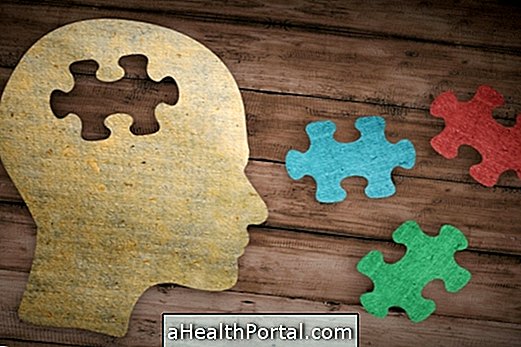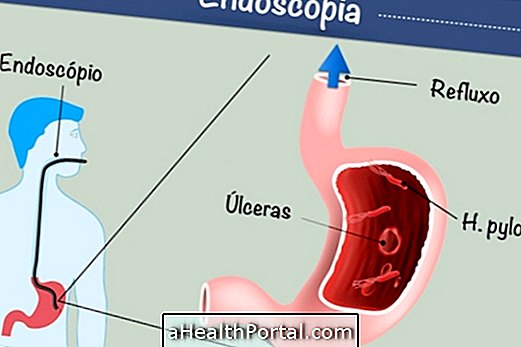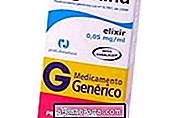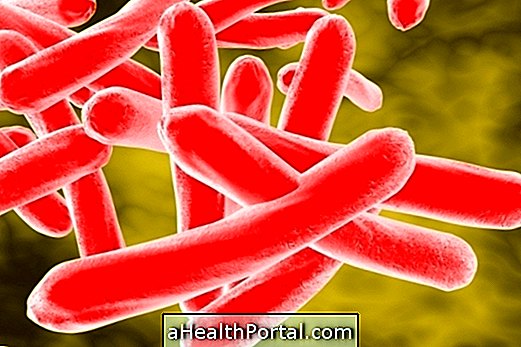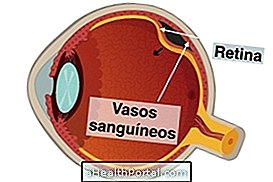There are several causes for facial pain, ranging from a simple bump, sinus infections, a dental abscess, headaches, temporomandibular joint (TMJ) dysfunctions, or even trigeminal neuralgia, which is a pain that appears in a nerve of the face and is very strong.
If the face pain is intense, constant, or goes back and forth frequently, it is recommended that a general practitioner or family doctor be consulted so that the first evaluations and, if necessary, examination can be carried out, so that you can identify what causes the discomfort and then indicate treatment or referral to a specialist.
Generally, the location of the face on which the pain appears and the presence of associated symptoms, such as a jaw thrust, tooth pain, altered vision, ear pain or nasal discharge, for example, can give the doctor advice, facilitating research.
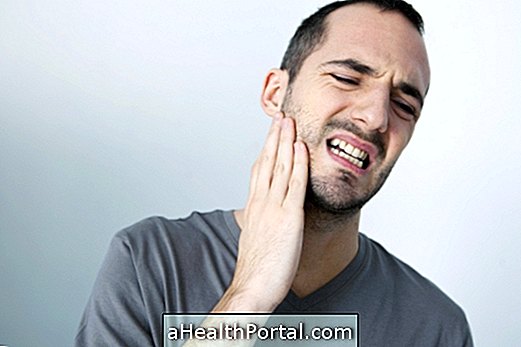
Despite the numerous causes for face pain, we will mention here some of the main ones:
1. Trigeminal Neuralgia
Trigeminal neuralgia or neuralgia is a dysfunction that causes intense face pains, which arise abruptly, such as an electric shock or spike, caused by damage to a nerve called trigeminal, which sends branches responsible for helping in chewing and giving sensitivity to face.
- What to do : The treatment is indicated by the neurologist, usually with anti-epileptic drugs, which act to control the episodes of nerve pain. In cases where there is no improvement with drug treatment, surgery may be indicated. Understand the treatment options for trigeminal neuralgia better.
2. Sinusitis
Sinusitis, or rhinosinusitis, is infection of the sinuses, which are air-filled cavities between the bones of the skull and face, and which communicate with the nasal passages.
Generally, the infection is caused by viruses or bacteria, and can reach only one or two sides of the face. The pain is usually a feeling of weight, which worsens when lowering the face, and may be accompanied by other symptoms such as headache, runny nose, cough, bad breath, loss of smell and fever.
- What to do : The infection lasts for a few days, and some of the doctor's advice is nasal lavage, analgesics, rest and hydration. In case of suspected bacterial infection, the use of antibiotics is advised. Check out more details on the symptoms and treatment of sinusitis.
3. Headache
The headache can also cause sensitivity in the face, and may occur in cases of migraine, in which there are dysfunctions in the nervous system, or tension headache, in which there is an increase in the sensitivity of the muscles of the head and neck by the tension.
Face pain is also characteristic of a specific type of headache, called headache in salvos, which is characterized by very severe pain on one side of the skull and face, accompanied by redness or swelling of the eye, tearing and runny nose.
Cluster headache usually occurs in crises that may occur at certain times of the year or recur and come back periodically, however, although it is known that there is a connection with the nervous system, the exact causes that lead to its onset are not yet fully understood .
- What to do : Headache treatment is guided by the neurologist, and includes remedies like painkillers. In the case of cluster headache, oxygen inhalation or a medicine called Sumatriptan is also indicated to control seizures. Learn more about features and how to treat headache in salvos.
4. Dental Problems
Inflammation in the tooth, a periodontitis, a cracked tooth, a deep caries that compromises the nerves of the tooth or even a dental abscess, can cause pain that can also be radiated to the face.
- What to do : In these cases, the treatment is indicated by the dentist, with techniques such as cleaning, channel treatment and use of analgesics and anti-inflammatories, for example. Learn more about how caries treatment is done.

Temporomandibular Dysfunction
Also known as TMD or TMJ pain, this syndrome is caused by a joint disorder that connects the jaw to the skull, causing signs and symptoms such as chewing pain, headache, pain in the face, difficulty opening the mouth, and cracking jaw, for example.
Problems that prevent the correct functioning of this joint can cause TMD, and one of the most common causes is to tighten your teeth during sleep, to have had a blow in the area, changes in teeth or bite and the habit of nail biting, for example .
- What to do : the treatment is guided by the bucomaxil surgeon, and in addition to painkillers and muscle relaxants, it is also indicated the use of sleeping plates, orthodontic appliances, physiotherapy, relaxation techniques or, ultimately, surgery. about the treatment options for TMJ pain.
6. Temporal arteritis
Temporal arteritis is a vasculitis, a disease that causes inflammation of the blood vessels because of autoimmune disease, and which mainly affects people over 50 years.
Symptoms may include headache, tenderness in the region where the temporal artery passes, which may be on the right or left side of the skull, pain and stiffening of the muscles of the body, weakness and spasms of chewing muscles, and lack of appetite, fever and, in more severe cases, eye problems and loss of vision.
- What to do : After the disease is suspected, the rheumatologist will indicate the treatment, especially made with corticosteroids, such as Prednisone, which can decrease inflammation, alleviate symptoms and control the disease well. Confirmation of temporal arteritis is done with clinical evaluation, blood tests and biopsy of the temporal artery. Learn more about the symptoms and treatment of temporal arteritis.
7. Changes in the eyes or ears
An ear inflammation, caused by ear infection, an injury, or an abscess, for example, can cause pain that radiates to the face, making it more sensitive.
But inflammations in the eyes, especially when intense, such as those caused by orbital cellulitis, blepharitis, herpes ocular or even by a blow, can also cause pain in the eyes and face.
- What to do : An ophthalmologist's evaluation is necessary if the pain starts in one or both eyes and also the otorhinolaryn if the pain starts in the ear or is accompanied by dizziness or tinnitus.
8. Persistent idiopathic facial pain
Also called atypical facial pain, it is a rare condition that causes pain in the face but does not yet have an enlightened cause, and is believed to be related to changes in the sensitivity of the facial nerves.
The pain can be moderate to intense, and it usually appears on one side of the face, it can be continuous or go back and forth. It can be worsened with stress, fatigue or being in association with other diseases such as irritable bowel syndrome, low back pain, headache, anxiety and depression.
- What to do : There is no specific treatment, and can be performed with the association of antidepressant use and psychotherapy performed by the physician after the investigation and exclusion of other causes.







